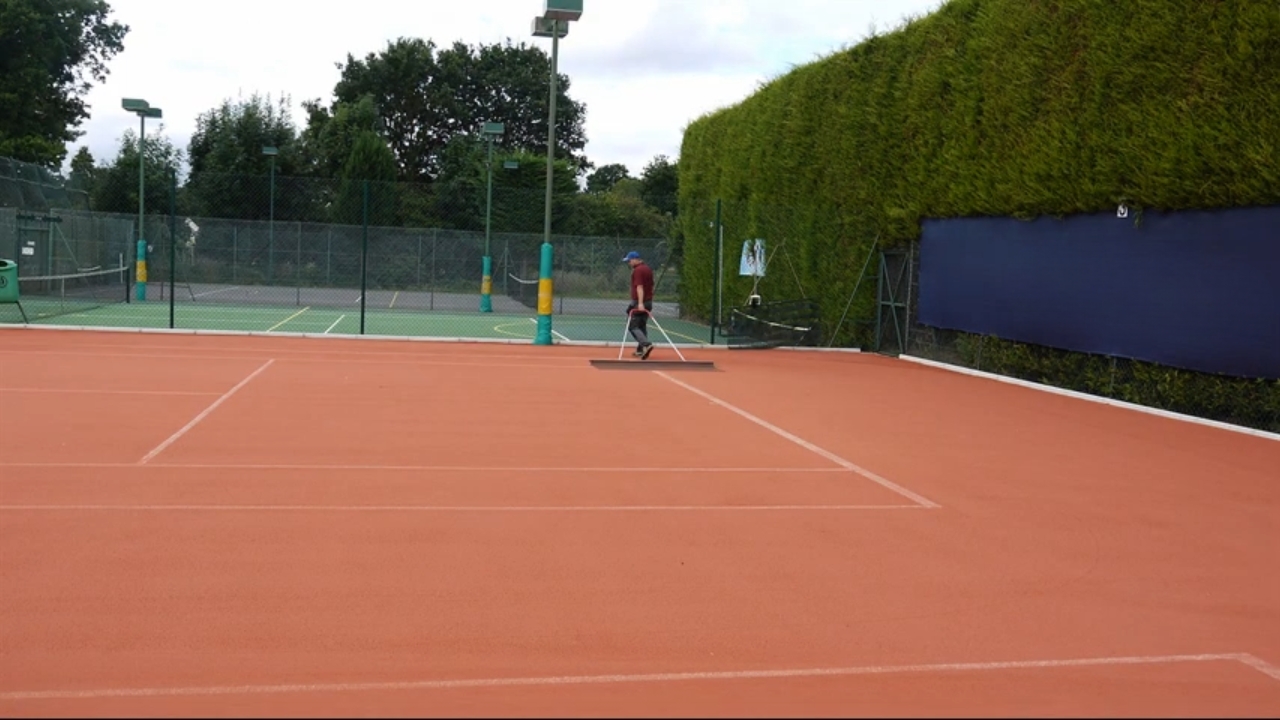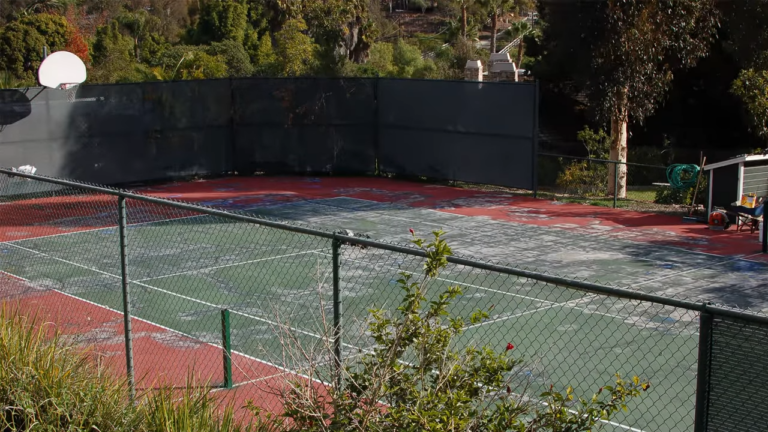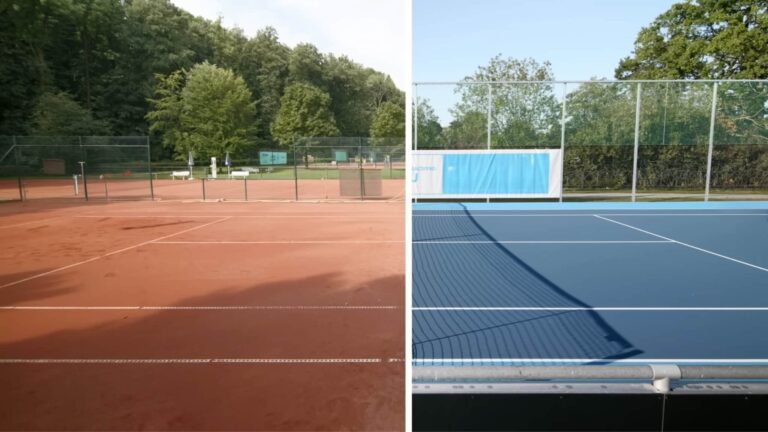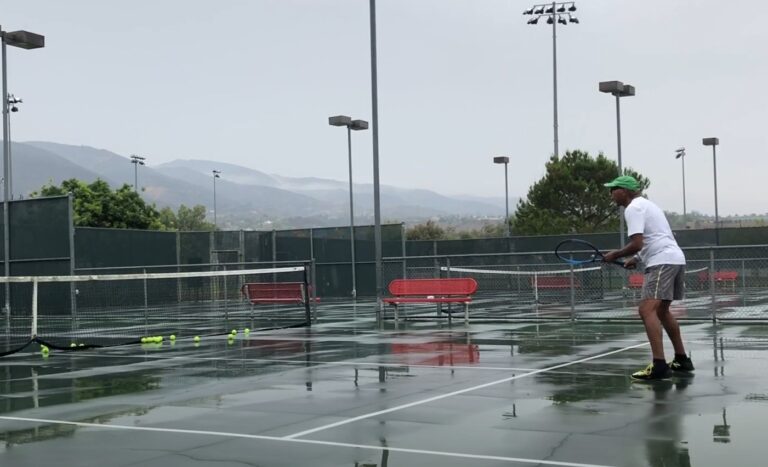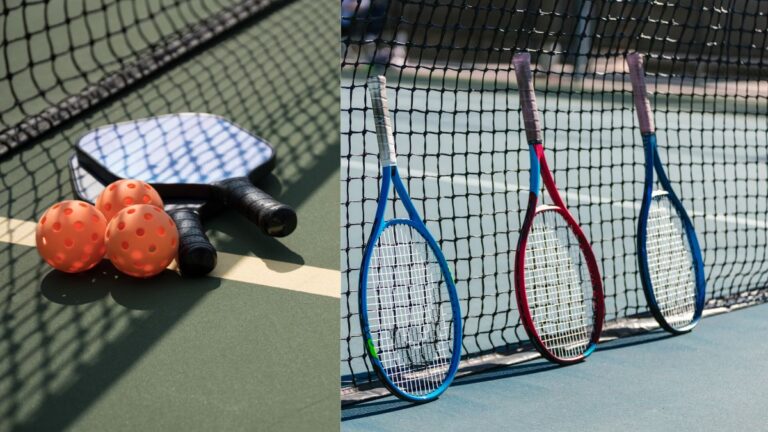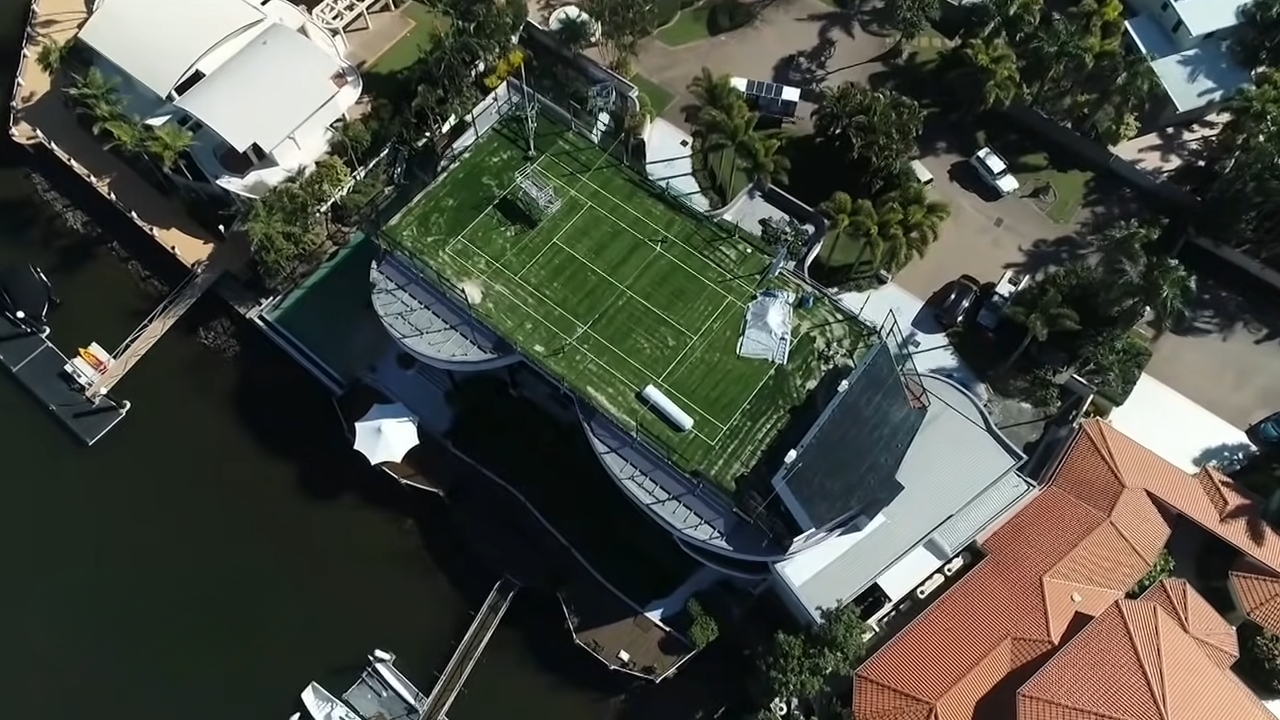No matter if you have clay, hard, or grass courts at your facility, upkeep is always important. But clay courts do take a bit more TLC than others.
If that’s the surface you decided on, here are some things you’ll need to do to keep it in tip-top shape.
Purchase the Correct Tools
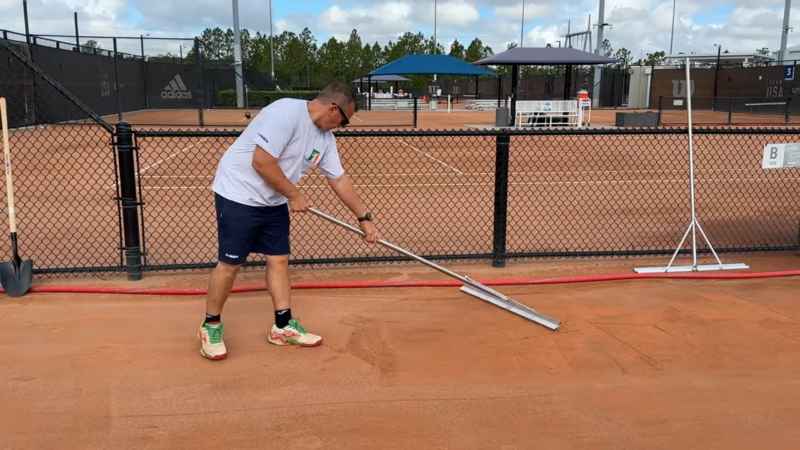
You’ll want to make sure you get the right equipment for the job.
Here’s what you’ll need:
- Lute – that’s what ya use to break up hard areas and spread new clay. Real important.
- Drag broom – gives your court a nice smooth finish. Can’t be without it!
- Line broom – sweeps clay off the lines so folks can see where to aim.
- Line scrubber – gets stubborn clay bits off if the broom ain’t enough.
- Court rake – for around the edges to stop grass and weeds from growin’.
- Aussie clean sweep – picks up tiny stuff like pine needles that could damage rackets.
- Spreader – distributes fresh clay and calcium when it’s time to replenish.
- Roller – compacts everything nice and tight, especially the lines.
Maintenance Steps
Maintenance for clay tennis courts can be broken down into three categories – daily care, periodic upkeep, and annual deep cleanin’.
Different clay surfaces may need their own special care, but most clay courts will require daily drag broom sweepin’, periodic rollin’ and waterin’ every few weeks plus dressin’ a couple of times a year, and annual deep cleanin’ by removin’ the top layer and replacin’ it along with inspectin’ the bottom for any damage.
When considering the Grand Slam tournaments, each major event features unique playing surfaces including clay at the French Open, grass at Wimbledon, hard courts at the Australian Open and US Open, each demanding distinct maintenance strategies to keep them in top condition for professional play.
Daily Maintenance
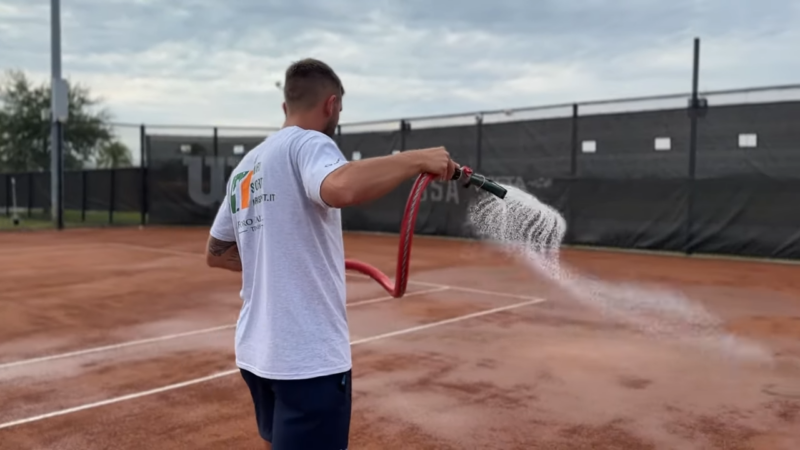
Every day you’ll need to drag the broom across the court. This evens out the clay bits that got loose from wind or play.
Water is also a must on most days. Keepin’ the clay moist makes for a good grip under your feet. Check if it feels wet already – if so, may not need extra H2O that time. Usually, people water twice per day though.
Be sure to roll it too for firmness. This packs it down tight so you don’t slip on loose clay. If it seems solid already, can go every other day with the roller instead of daily.
Stickin’ to this simple routine each day is important for keepin’ your court in top shape.
Be mindful of the dimensions of your tennis court as you maintain it. Proper upkeep not only ensures a good playing surface but also preserves the integrity of its size and layout over time.
Periodic Maintenance

Check on any spots that changed over the weeks. Fill in low or dented areas with fresh clay to even them out. Also, look for any parts that got too high up and smooth those down.
If spots feel too slippery, use scarification to rough ’em up. And clean out anything growin’ around the edges or drainage ditches. This keeps water flowin’ right.
Taking care of small problems before they get big is important with periodic upkeep. Give the whole court a once over every few weeks to spot any issues that need fixin’.
Annual Maintenance

Every year you’ll want to give the court a full overhaul. Scrape away the top layer and level it all out fresh. Then add a new coat of the clay/sand mix to fluff it back up. When budgeting for these maintenance tasks, consider the cost of resurfacing a tennis court.
Be sure to put down new side tapes too so lines look sharp. Sometimes repairs beyond standard cleanup may be needed. If the base has holes or cracks, those will need fixin’ before re-doin’ the surface.

